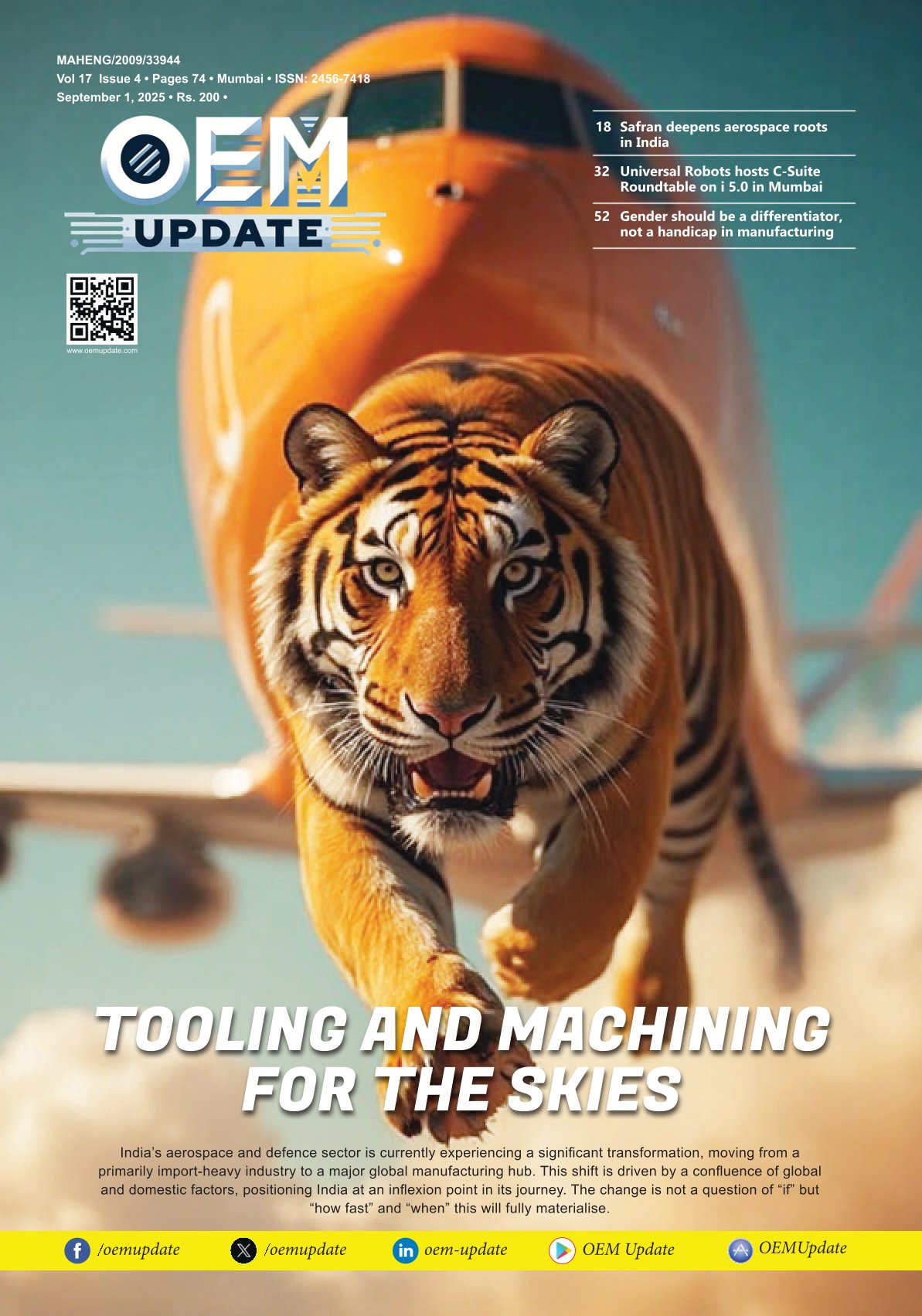Future of hole-making
By admin February 25, 2014 7:33 am IST
With tool costs playing a significant role in making holes in CFRP and metal stacks, a focus on the total cost per hole is all the more important.
Fig. 1: In the manufacturing of composite and metal stack aerospace components, focus is needed on the total cost-per-hole. This takes into account the time needed for tool change, the tool cost and above all productivity, where security, tool-life and performance are decisive. Sandvik Coromant and Precorp provide solutions and support to optimise hole-making.
Today, a third of all hole-making is done with manual units. About a quarter is done in machine shops using CNC machinery or robots whilst around 40 per cent is carried out using power-fed equipment ADU (auto drill units). But through aerospace harmonisation programs, there is a clear, ongoing shift to the more-controlled ways with manual hole-making becoming limited to some parts of assembly.
With the more-controlled, stable and consistent ways of making holes, using power-fed equipment and CNC machineries, the potential of tool-design and material much more suitable for carbon-fibre reinforced plastic (CFRP) and metal-stacked components can be utilised. Precision holes need precision methods and equipment.
The modern cutting tool polycrystalline diamond (PCD) — either as an integral part of the drill or as a coating — is extremely well suited to cutting composites, providing long tool life, high productivity and high hole-quality consistency. Moreover, diamond-coated tools have evolved to achieve an increasingly higher percentage of the tool-life offered by solid PCD bits. Even cemented carbide can offer a preferred solution for more controlled machining ways when a very sharp cutting edge is needed. This can be easily achieved with a ground, fine-grained uncoated carbide edge.
The cost per hole in composites is highly dependent upon working solutions that are consistent in performance and results. To achieve this, one needs to utilise the resources which dedicated, specially designed hole-making tools and methods will provide. Engineered tooling is a substantial success factor in composite hole-making.
Composite-component manufacturers are mostly concerned with the challenge that tool life and delamination present. This is followed by hole roughness and splintering as well as dust management. When CFRP stacked with metals, aluminium and/or titanium, chip control, burr height and hole-tolerance are additional issues. However, there are issues with a number of operations needed to make the hole and the time to change tools. As demands rise in manufacturing, having a competent partner to work with also become an issue.
What are composites?Composites are very abrasive when machined. In addition to cutting various resins, the fibre part of the material is fractured and shattered. Composites are very good at signalling any weaknesses in the machining process — better than metals. Their broad variation in properties, unpredictability and growing importance as a material demands an unconventional approach and continuous improvements to maintain a competitive machining process.
Vein technologyThis is an advanced high-tech method, based on a patented process that originated in the mid 80s to combine PCD and carbide. The vein technology allows for a variation in cutting geometries that were impossible to achieve with conventional PCD-bit processes. Vein technology also allows variations in tool design to cope with less rigid set-ups to stable, high-volume applications with precision holes.
Hole-making methodsHole-making methods have been evolving. A leading concept is orbital drilling, based on rotating a cutting tool around its own axis and simultaneously about a centre axis which is off-set from the axis of the cutting tool. The tool can be moved simultaneously in an axial direction to drill or machine a hole and/or combined with a radial motion to machine an opening or cavity. By adjusting the offset, a cutting tool of a specific diameter can be used to drill holes of different diameters.
Orbital drilling units with controlled offset can define and optimise the drilling process in many different ways. This makes it possible to machine also complex and close tolerance holes and perform finishing operations, using the same tool and set-up. Portable orbital hole-making units, such as Novator ones, are lightweight and attached to templates or other devices during the drilling operation. Special tool solutions are available for achieving high hole quality whether using portable or CNC machineries, with ongoing developments to optimise tools for different stack combinations. A standard tool range with recommendations and guide is also under development for orbital drilling in CFRP-aluminium and CFRP-titanium stacks.
Vibration drilling is another specialised hole-making method used increasingly in composites and metal stacks. The principle is based on fracturing the chips as they are being generated. The method involves using an oscillation movement in combination with the feed movement in the drilling process. The forced mechanical vibrations are generated in an axial direction with low frequency and variable to best suit the application. The advantages of the process are improved chip control in metal and cleanliness, especially when machining is dry and can be used as one-shot operation.
A recent hole-making exampleA recent example illustrates what the combination of dedicated, engineered drills and drilling method can achieve. In the particular aerospace component, case drilling is performed using a power-feed unit for a CFRP-titanium stack application with minimum quantity lubrication.
The challenge in this case, with two demanding materials, is the instability of the portable machine. Hole making was performed with and without vibration drilling, but the latter alternative provided improved chip control in the titanium to eliminate any chip interference with the surface finish as well as more predictable tool life.
The result of this collaboration with the manufacturing company is an innovative solution in the form of an engineered tool, combined with the most suitable method.
Manufacturing costThe cost to manufacture is important for composite and metal stack applications. The role of evolving machinery, methods and tools will be playing a more important part in how these combinations of light, strong and durable materials will be put to use in aerospace industry. Tool and method advances are proving that machining economy can be considerably improved and thereby prove to be key success factors in manufacturing, determining machine utilisation, costs and productivity. With tool costs playing a significant role in making holes in CFRP and metal stacks, a focus on the total cost per hole is all the more important.
Cookie Consent
We use cookies to personalize your experience. By continuing to visit this website you agree to our Terms & Conditions, Privacy Policy and Cookie Policy.
















